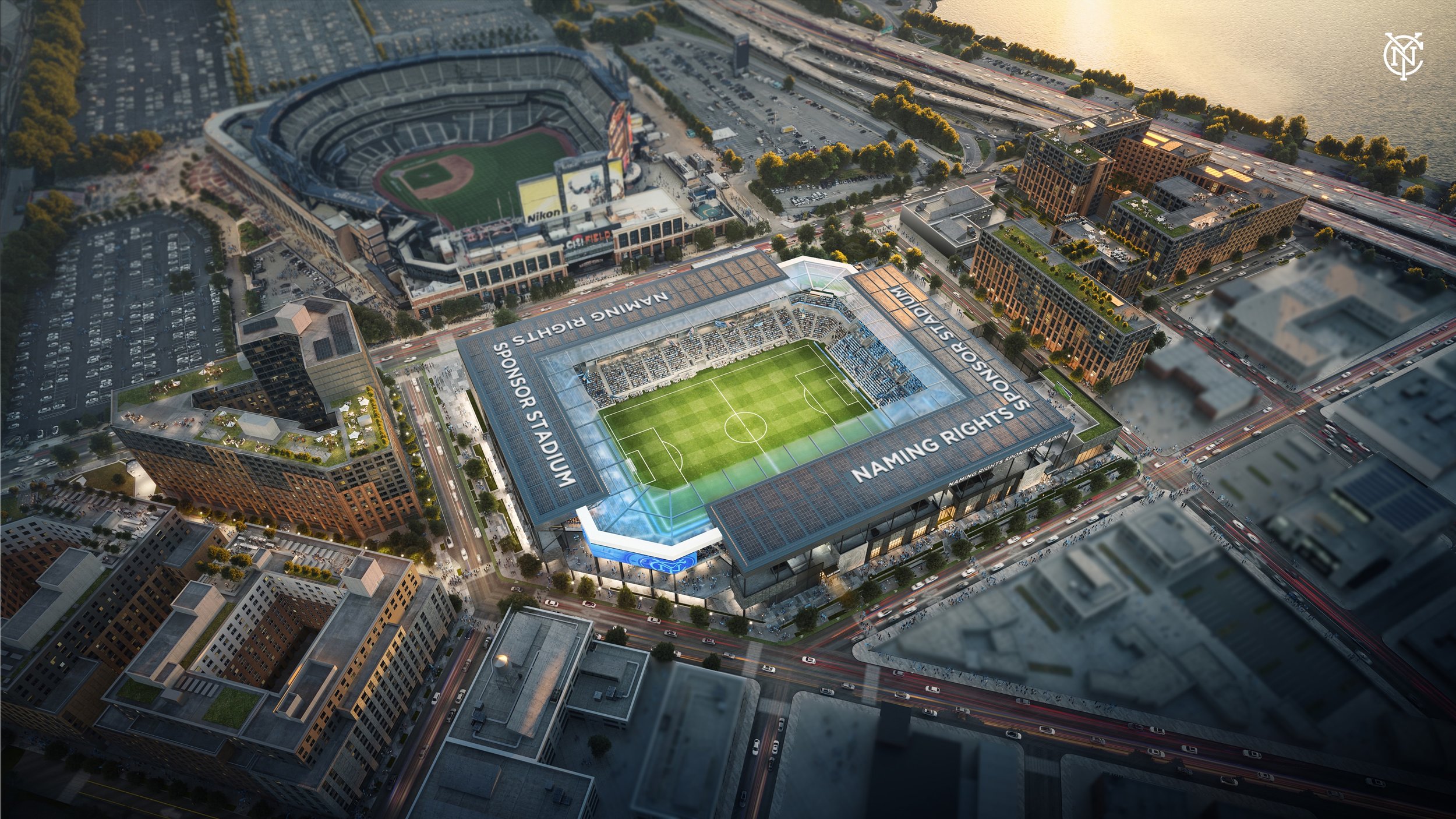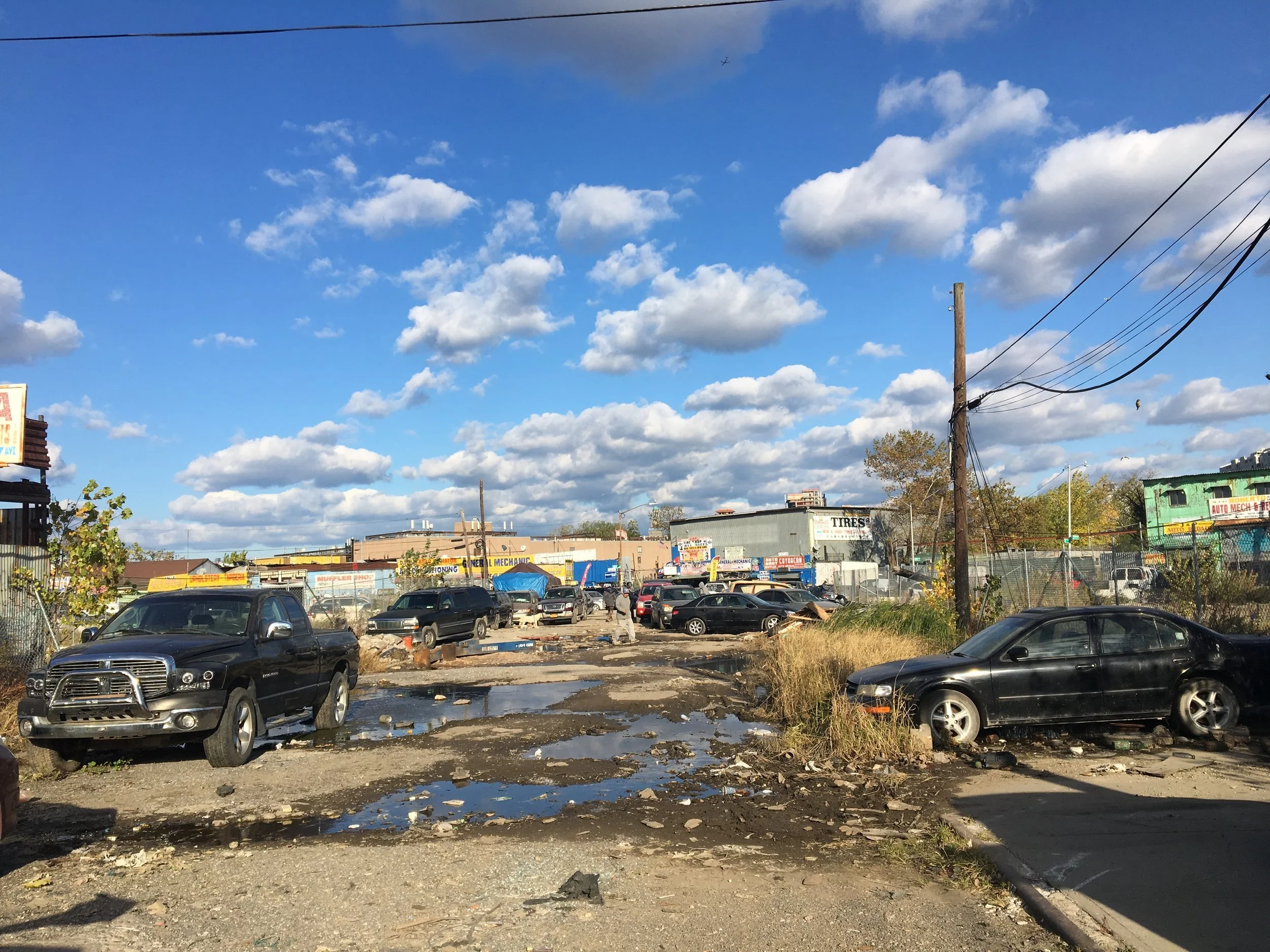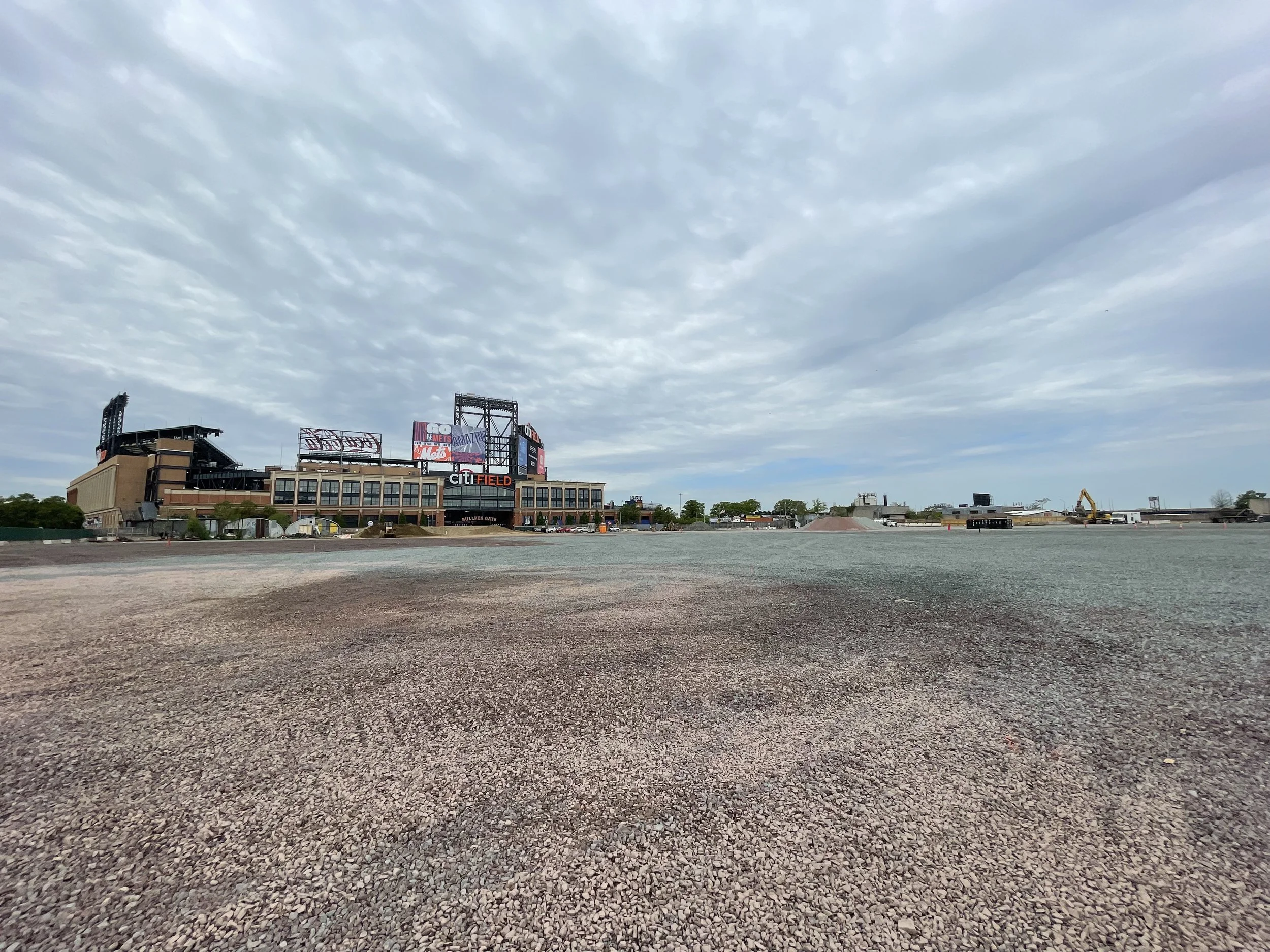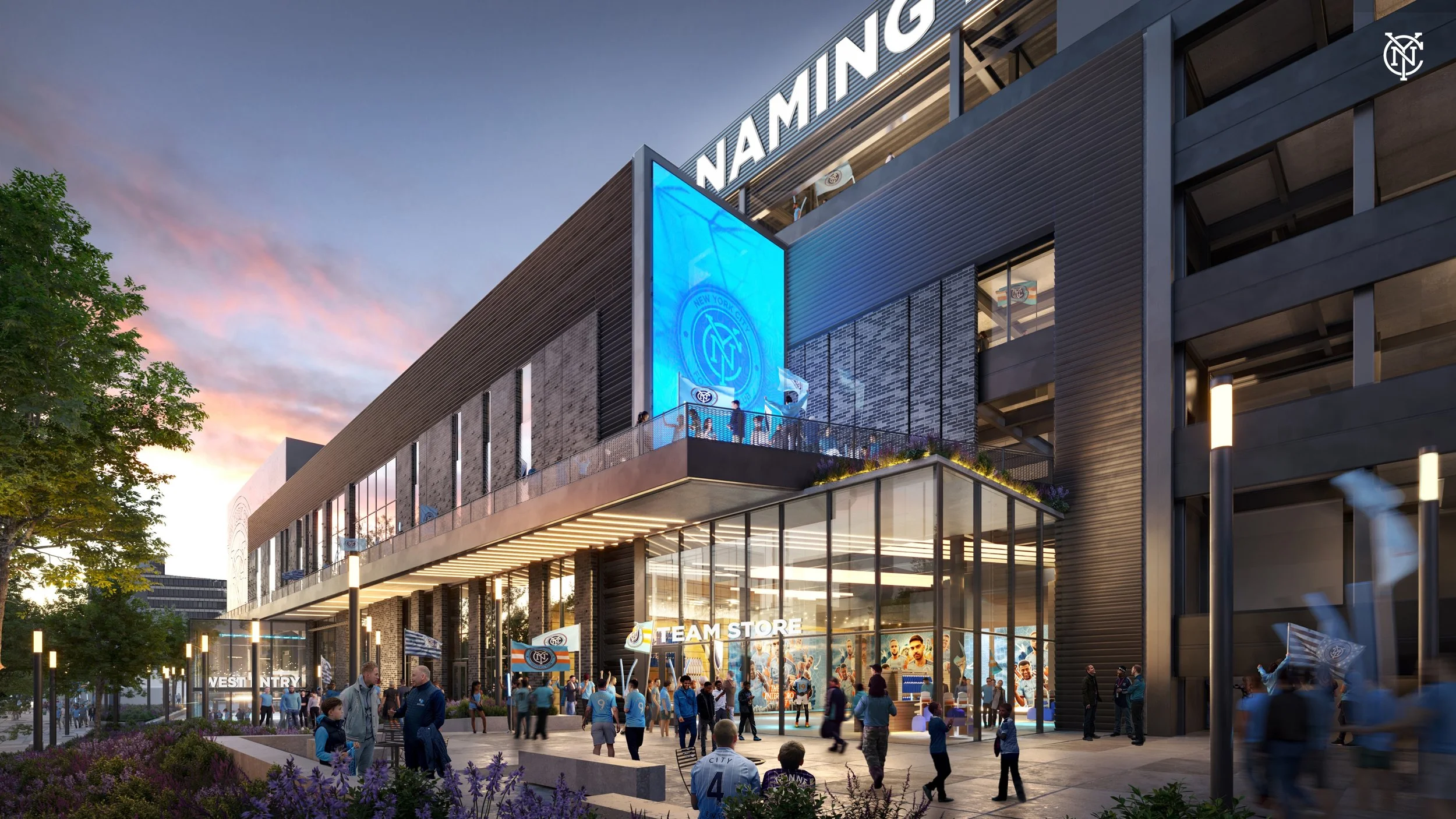NYCFC officially begins city review of Willets Point stadium plans
/The city’s review process for the plan to bring New York City Football Club’s soccer stadium to Willets Point officially began this week. Rendering via NYCFC
By Jacob Kaye
The city, a group of developers and the New York City Football Club officially kicked off their bid to bring New York City’s first-ever soccer stadium to Queens this week.
Plans to build the 25,000-seat soccer stadium in the heart of what will soon be a completely redeveloped Willets Point were unveiled to the City Planning Commission on Monday. Now that the plans have been certified by the commission, the project, which also includes proposals for over 1,000 units of affordable housing, a hotel, retail areas and open space, will officially begin making its way through the city’s Uniform Land Use Review Procedure, otherwise known as ULURP.
The proposal – referred to as phase two – marks a major step forward in the city’s efforts to build a new neighborhood in Willets Point, a polluted corner of Queens that in recent years has been defined by a number of failed efforts to get its transformation underway.
“With this plan, our administration is seizing a once-in-a-generation opportunity to create a brand-new neighborhood — a Willets Point that offers opportunity for working people and all New Yorkers,” Mayor Eric Adams said in a statement.
The presentation given to the City Planning Commission on Monday was the most detailed proposal of phase two yet – though major details remain unannounced or undecided.
Phase two of the development, which was first announced by Adams last fall, will include 1,400 units of affordable housing, an 18-story hotel, several parking garages, over 75,000 square feet of retail space, a number of pedestrian plazas, open space and the stadium, which is expected to open for its first match in 2027.
The second phase of the project largely builds off the first, which has already made its way through the ULURP process. Construction on phase one of the project, which includes 880 units of income restricted housing, 220 units of senior housing, a 25-space parking garage, over 22,000 square feet of retail space, around 5,000 square feet of community facilities and over 30,000 square feet of open space, is expected to begin in the coming months and be completed by 2026.
Also in phase one will be a new K-8 school with 650 seats, however, construction on the school, which is being spearheaded by the School Construction Authority in a separate effort, is not expected to be completed until 2027.
Together, phases one and two of the development are expected to bring 2,500 affordable apartments – none of which will be available for ownership – to an area that has for over a century been almost exclusively reserved for industrial use, but which has seen the population of neighborhoods to its east and west balloon.
The current plans for development from the New York City Football Club, Queens Development Group and the New York City Economic Development Corporation mark the furthest the city has gotten toward actually building in Willets Point, an area that has been eyed for development by the past three mayoral administrations.
A century ago, Willets Point was the inspiration for a particularly desolate setting in F. Scott Fitzgerald’s classic novel, “The Great Gatsby.” He called it the “Valley of Ashes,” named for the conditions created by the Brooklyn Ash Removal Company, which dumped heaps of ash onto the site until 1930, when the company was booted from the neighborhood to make way for the World’s Fair.
For a time it served as a city dump and later became home to scores of auto mechanic shops. Those shops populated the area when in 2008, former Mayor Michael Bloomberg and the City Council officially marked Willets Point for redevelopment.
A street in Willets Point in 2019. Eagle file photo by Jacob Kaye
In the decade that followed, auto workers and business owners who remained in the area said the city ignored them, letting their neighborhood’s infrastructure fall into disrepair. Workers in Willets Point joked that people coming to get their car fixed there would drive off and come back several minutes later, having damaged their car on the way out.
Others employed there left to participate in a city-supported relocation program, which, by some accounts, was a failure. On Monday, members of the City Planning Commission asked Scott Solomon, the senior borough planner in Queens with the Department of City Planning who led the presentation, about the status of the relocation service, and the status of any potential future relocation services for the business and employees who currently work in what has been designated as phase three of the development. Solomon said that he did not have data on the program and directed further questions to the EDC.
At the time that the city was clearing out business in the area, it was simultaneously pursuing plans to bring a shopping mall to Willets Point. However, the plan, which proposed putting the mall on what is currently the parking lot at Citi Field, was shot down in court.
It wasn’t until the final years of former Mayor Bill de Blasio’s second term in office that the current plan began to take shape.
De Blasio announced the details of phase one of the site in June 2021, and remediation began on the land shortly after – around that time, the city also agreed to lease the land, which is city owned, to Related Companies and Sterling Equities, the two development companies that comprise of Queens Development Group, for 99 years. The clean-up, which included excavating 100,000 tons of contaminated earth and replacing it with 80,000 tons of clean dirt, was completed earlier this year.
Phase two of the Willets Point redevelopment project, where the proposed NYCFC soccer stadium will be built. Photo by Jacob Kaye
Adams first announced the soccer stadium deal, alongside City Councilmember Francisco Moya, in November 2022. Moya, an avid soccer fan, is perhaps the proposal’s biggest booster.
"We are one step closer to finalizing a project that has it all,” Moya said in a statement on Monday. “This is a once-in-a-generation project that prioritizes housing in a city that is currently facing a severe housing crisis. It's not just about providing homes but also about creating stable job opportunities, helping alleviate the burden of our neighboring schools which are overcapacity, enhancing open spaces, and establishing a state-of-the-art privately funded soccer stadium, which will act as the economic engine driving this entire vision.”
Though the current plans for the area have mostly received support from public officials and members of the community, complications remain.
Most presently, Queens Borough President Donovan Richards said earlier this month that he wouldn’t sign off on plans for the soccer stadium if the city didn’t find a way to allow vendors to sell their goods in Corona Plaza without having to go through the city’s arduous vending license process – Moya has long complained about the presence of unlicensed vendors in the area and supported a law enforcement sweep of the plaza over the summer.
But despite his threat, Richards has largely been a fan of the plan to bring professional soccer to Queens.
Richards called the project “the definition of community development” while on a tour of the first phase of the development with Moya and EDC president Andrew Kimball in May. He was particularly excited about the affordable housing proposed in the neighborhood.
“As this site gets developed, we’re really thinking about not just simply calling them [apartment] units,” the borough president said. “These are people's lives that are going to be impacted, who will be able to stay and live in a neighborhood across the street from Citi Field and a new soccer stadium, which is unheard of.”
During an appearance on NY1 on Monday, Richards said that he and the Adams administration were nearing a deal to bring the vendors back to Corona Plaza, potentially ending his threat to give an advisory “no” vote on the soccer stadium. Also on NY1, the borough president said that he’d been pushing the city, NYCFC and Queens Development Group to put forth a plan that offers the maximum benefit to the stadium’s would-be neighbors.
“The goal is to ensure that one, we create jobs,” Richards told the outlet. “The stadium is a great project but at the end of the day, we have to make sure those benefits are reaching local communities.”
Another neighbor NYCFC also may have to win over – New York Mets owner Steve Cohen, whose baseball team plays just across the street from where the stadium is set to be built.
Last fall, the Adams administration said Citi Field would allow NYCFC to use its parking lot – which is on city-owned land leased by the Mets – during its home games. However, that announcement came before Cohen began seriously pursuing a proposal to bring a casino to the lot. As of Monday, a deal between the sports franchises had yet to be reached.
According to the land use application submitted to the City Planning Commission, should Cohen decide against sharing the parking lot, NYCFC would have its fans and employees park their cars in Downtown Flushing, in either a public parking lot, garage or on the street of the already-congested neighborhood.
“In the event parking at CitiField is unable to be utilized, research has indicated that the otherwise-required 1,000 parking spaces are available at public parking garages and parking lots within walking distance of the stadium,” the application reads.
According to the fútbol club, there are around 9,600 public parking spaces within a 1-mile radius of the stadium – which would be a 20 to 30 minute walk to the stadium.
“On a typical Saturday night when soccer matches would occur, approximately 1,750 of these 9,600 spaces are unused and available for parking by attendees to stadium events,” the application reads. “On a typical weeknight, there are even more spaces available, with approximately 2,100 spaces unused.”
A rendering of one of the entrances of the proposed NYCFC soccer stadium in Willets Point. Rendering via NYCFC
The questions about parking, and the general impact the project will have on Willets Point’s future inhabitants as well as the area’s current neighbors, are likely to come up at future meetings before the City Planning Commission, as well as before Community Board 7, which has been monitoring the city’s plans for Willets Point for over a decade. In recent months, the board has been pressing the city to build a police precinct in the new neighborhood to match the growth in population.
"We are excited to see 15 years of everyone’s hard work come to fruition,” Chuck Apelian, the vice chairman of CB7 said in a statement. “A vibrant new community of 2,500 affordable housing units with a new elementary school, a soccer stadium and a hotel will rise from the remediated ashes of the former Willets Point junkyards. In addition, we look for the City’s support to increase public safety in Community Board 7 Queens.”
In the coming months, a public hearing hosted by the Department of City Planning will be held on the project. The project will then be brought before the community board for review and an advisory vote. After, it will be presented to the borough president and the borough board, which will also issue advisory votes. It will then go back before the City Planning Commission for a vote before being brought before the City Council and finally the mayor for approval.







